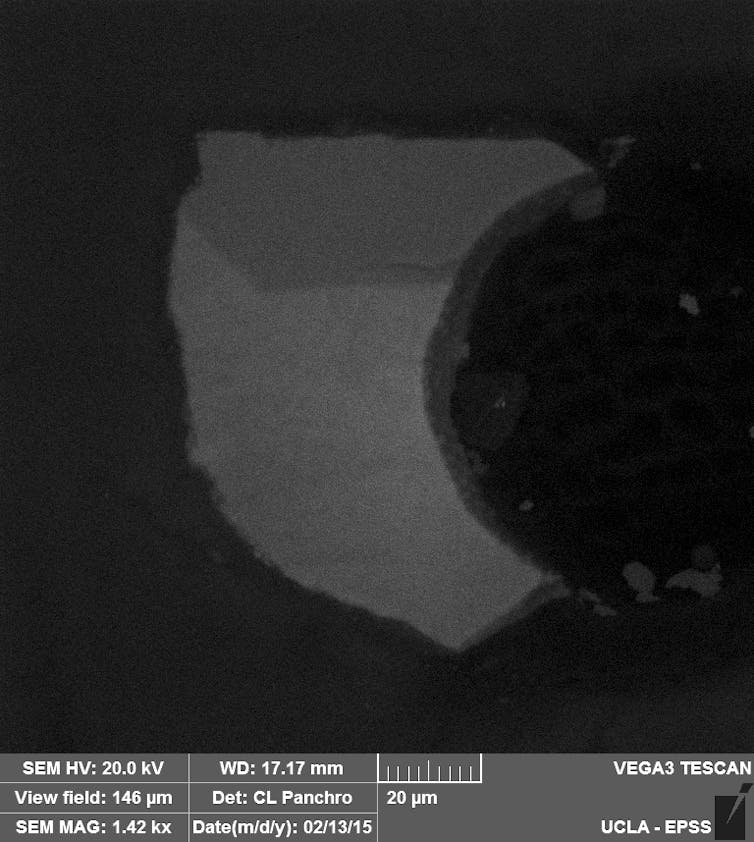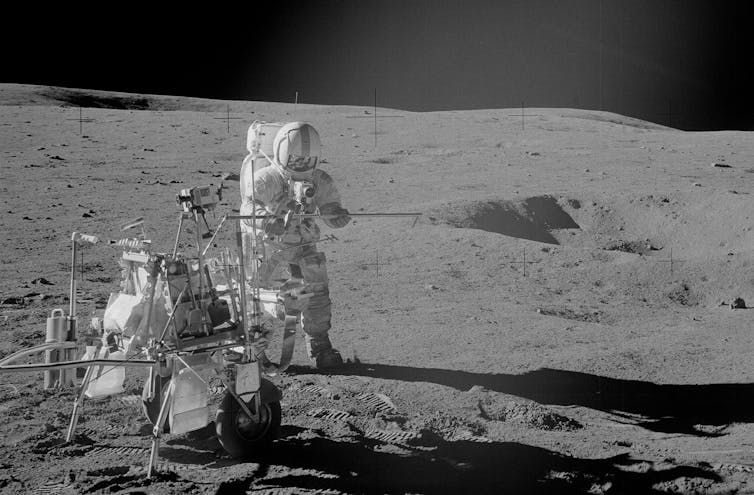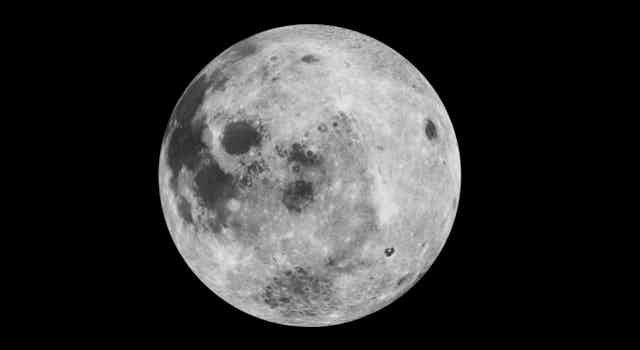Most scientists agree that the Earth has pretty much always had its moon. Details of the moon’s composition (in particular the “isotopic mixture” of heavier and lighter versions of various elements) are too similar to the Earth’s for it to have been captured from somewhere remote. However, some compositional details differ enough to rule out the idea that the moon is simply a chunk of the Earth that broke loose.
The details of how the moon formed, and when, have long been debated. Now two new studies shed fresh light on the process – even pinning down a date.
For more than 30 years, the prevailing view of the formation of our moon has been the “giant impact hypothesis”. The precursors to the current four rock planets – Mercury, Venus, Earth and Mars – appear to have been dozens of smaller bodies known as “planetary embryos”. According to the giant impact hypothesis, our moon formed as the result of the last of a series of “giant impact” mergers between planetary embryos that eventually formed the Earth. In this last collision, one embryo was nearly Earth-sized and the other approximately Mars-sized. The merged body resulting from this became the Earth. Debris flung out from the impact, most of which came from the rocky part of the smaller body, gathered in orbit to become the moon.
But how quickly did all this happen? Fortunately, the supernova explosion that is thought to have given the impetus for our local cloud of gas and dust to contract – and so form the sun and its planets – seeded the cloud with newly-formed isotopes of radioactive elements. As each decays to a stable isotope at a different rate, these provide an excellent series of clocks for timing the various events.
On this basis, the birth of the solar system is generally accepted to have occurred close to 4.57 billion years ago. Scientists have long debated how long after this Earth’s moon-forming impact occurred. The “late school” favoured 150-200m years after, whereas the “early school” favoured a date less than about 100m years after the origin.
Now a new study suggests it was a very early date indeed, no more than 60m years after the solar system’s birth. The team behind it, led by Melanie Barboni of the University of California, Los Angeles, analysed zircon crystals from samples of ancient lunar crust collected by Apollo 14. They argue that the ratio between two isotopes of the rare, zirconium-like element hafnium (Hf-176 and Hf-177 – the latter has one more neutron in the nucleus than the former) can be explained only if the magma ocean that covered the newly-formed moon had already solidified by 4.51 billion years ago.

This leaves, at most, only 60m years between the origin of the solar system and the solidification of the first lunar crust – the trace of which can be read in those zircon crystals.

Set against the total age of the solar system, 60m years to go from a cloud of gas and dust around the infant sun to a fully-formed Earth with its own large moon might seem unfeasibly short. However, it is long enough – 60m years ago, Britain and Greenland were still joined together, with no intervening Atlantic ocean (and Iceland didn’t exist at all). And bodies in space move a lot faster than Earth’s slowly creeping continents.
A series of impacts instead?
Meanwhile, an unrelated study in Nature Geoscience, also just published, claims that the giant impact hypothesis is flawed. An Israeli team used sophisticated computer modelling, called “smoothed particle hydrodynamics”, and concluded that it would be near impossible for such an event to produce a debris disc around the Earth with the necessary amount of angular momentum (rotational energy locked up in orbital motion and spin) to eventually form a stable moon.
Instead, they found that a more feasible way to form the moon is as the end result of a series of about 20 collisions by Mars-to-moon sized planetary embryos onto the body which later became the Earth. Each collision yielded a debris ring that would soon coalesce into a small moon. But tides would cause each successive moon to migrate outwards so that they would collide and merge with each other into the larger moon that we know today.

Are the two studies contradictory? I don’t think so. If the multiple-impact model is correct, then the 60m-year limit to the formation of the moon after the birth of the solar system could still date the end, or nearly the end, of the sequence of moon mergers.

